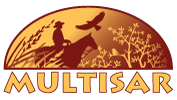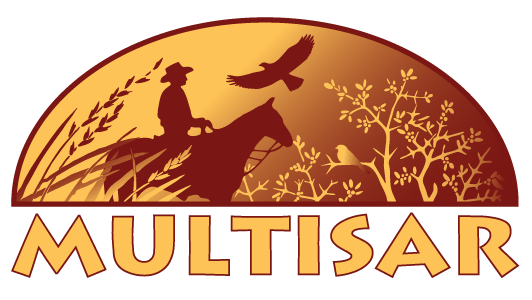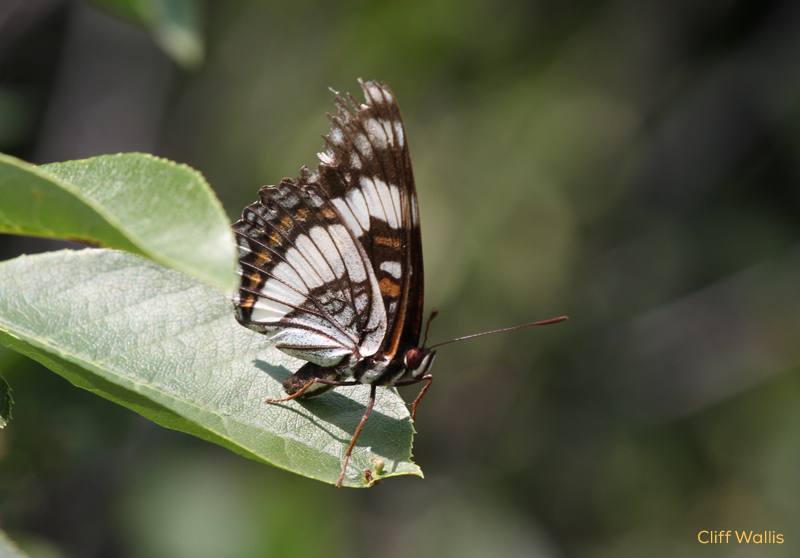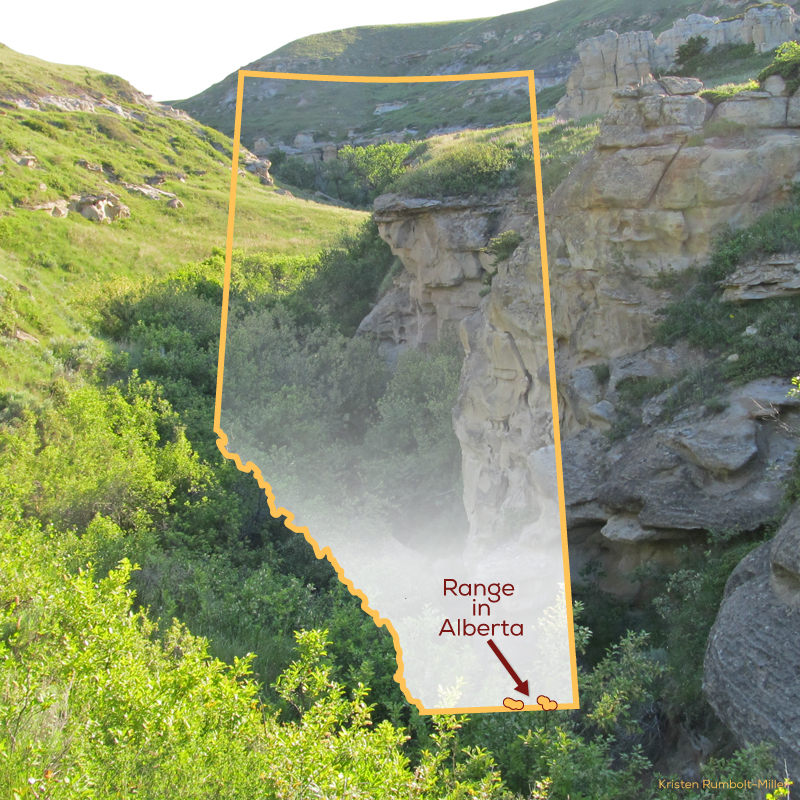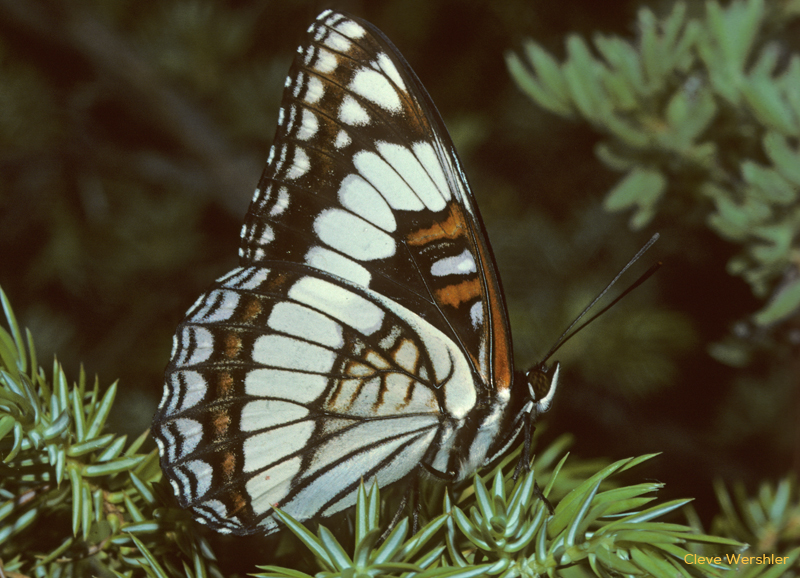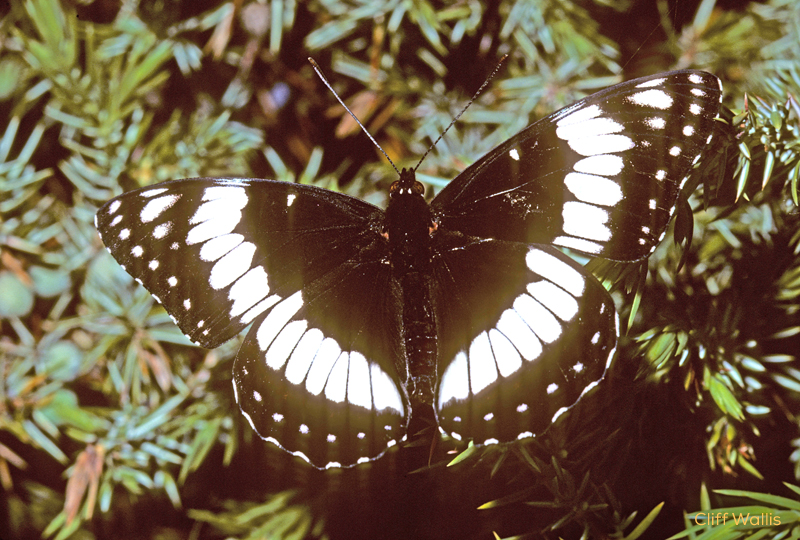Weidemeyer’s Admiral
Limenitis weidemeyerii
Black, White, and Big
Weidemeyer’s Admirals are restricted to a small area in south-eastern Alberta, but many people are more familiar with their common, but close relative, the White Admiral. Weidemeyer’s Admirals have less reddish-orange colour on their wings compared to White Admirals. They are a large butterfly, with a wingspan between 55 to 72 mm (about the size of a credit card).

In Alberta, the Weidemeyer’s admiral depends upon Saskatoon shrubs in which to lay their eggs.
Running Back to Saskatoon ♪
In Alberta, the only confirmed host plant of the Weidemeyer’s Admiral caterpillar is the Saskatoon shrub. Female butterflies lay their eggs on Saskatoon leaves, which the caterpillars eat after hatching. In the fall, caterpillars use silk to roll a Saskatoon leaf around themselves and overwinter inside. They emerge in the spring and continue feeding before pupating.
Caterpillars Incognito
Weidemeyer’s Admiral caterpillars use mimicry to conceal themselves from their primary predator, songbirds. They have evolved to look like bird droppings. This dissuades most birds from picking them up and eating them.
Population
The Weidemeyer’s Admiral is at the northern edge of its range in Alberta and has been found only in the far south of the province, at seven sites along the Milk River and its tributaries. It is likely that it occurs at other sites along the Milk River, but butterflies are difficult to find and survey.
A population of between 1800 – 3200 individuals has been estimated, based on the number found per kilometer and the number of kilometers of suitable habitat that is available.
Current Threats
- Non-native invasive trees, especially Russian Olive, have the potential to change the riparian habitats that the Weidemeyer’s Admiral relies on. Russian Olive has significantly altered vegetation communities in the lower reaches of the Milk River by replacing native cottonwood trees and is already found along the river in Alberta. Saltcedar is another invasive tree species that could move into Alberta, as it has become established on the Milk River in the USA.
- Livestock grazing can impact the establishment and health of riparian shrubs and trees that Weidemeyer’s Admirals require.
Species@Risk Quiz
Test your knowledge about Alberta’s grassland species at risk
Weidemeyer's Admiral Weidemeyer’s Admiral Weidemeyer's Admiral
Question 1 |
Weidemeyer’s Admiral butterflies are about the size of a:
Nickel
| |
Dollar coin | |
Credit card |
Question 2 |
The caterpillars of Weidemeyer’s Admiral butterflies look like:
Saskatoon berries
| |
Bird droppings | |
Bumblebees |
Question 3 |
Weidemeyer’s Admiral butterflies lay their eggs on:
Saskatoon leaves
| |
Prairie grasses | |
Hoodoos in the badlands |
Question 4 |
In Alberta, Weidemeyer’s Admiral butterflies have only been recorded:
Along the Bow River
| |
In the Cypress Hills | |
Along the Milk River |
Public
- Visit Writing-on-Stone Provincial Park in mid-June and July to look for Weidemeyer’s Admiral butterflies and other insects and wildlife that rely on cottonwood forests and coulee shrublands.
- Report any observations of Weidemeyer’s Admirals to your area biologist. If possible, provide photographic evidence and a precise location description or coordinates to ensure correct identification and site location.
- Voice your support for cottonwood forest and riparian shrubland conservation with your political leaders.
- Educate yourselves and your family about Weidemeyer’s Admiral and their role in the ecosystem.
Landowners
- Under the Alberta Weed Control Act, if you have Saltcedar on your property, it is your responsibility to destroy it, as it is designated as a “Prohibited Noxious” weed. You can contact your local County or municipal Agricultural Fieldman or Weed Inspector for means of eradicating this species.
- Russian Olive is an invasive species that should not be planted in or near riparian areas. If you have Russian Olive established in a riparian area, contact your local County or municipal Agricultural Fieldman or Weed Inspector for means of removing or controlling this species. Consider planting native species such as Saskatoon, Willow, Chokecherry or Thorny Buffaloberry as an alternative.
- Report any observations of Weidemeyer’s Admirals to your area biologist If possible, provide photographic evidence and a precise location description or coordinates to ensure correct identification and site location.
- Foster long-term health of your cottonwood forests by allowing adequate rest from grazing.
- Provide salt, minerals and off-stream water away from river valley trees, coulees and shrubby areas. This will have the added benefit of improving the use of adjacent range.
- If a flood occurs, avoid grazing your cottonwood forest for two years to allow seedlings to establish and grow strong enough to withstand grazing pressure.
- Consider installing wire mesh cages around cottonwood seedlings or fencing your cottonwood forest with page wire if seedling growth is being impacted by cattle or wildlife.
- Talk to your children and neighbours about the privilege of having this unique butterfly on your land.
What MULTISAR Does
- Records observations of Weidemeyer’s Admirals during wildlife surveys.
- Provides information about Weidemeyer’s Admirals and their habitat and recommendations for appropriate management of cottonwood forests and coulee shrublands.
- Develops Habitat Conservation Strategies in collaboration with ranchers to balance the needs of Species at Risk and sustainable ranching in the Grassland region and assists with implementing habitat improvements.
